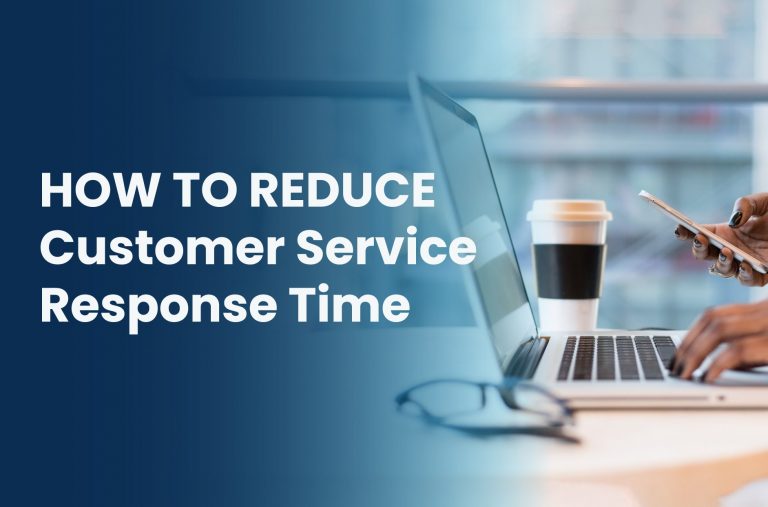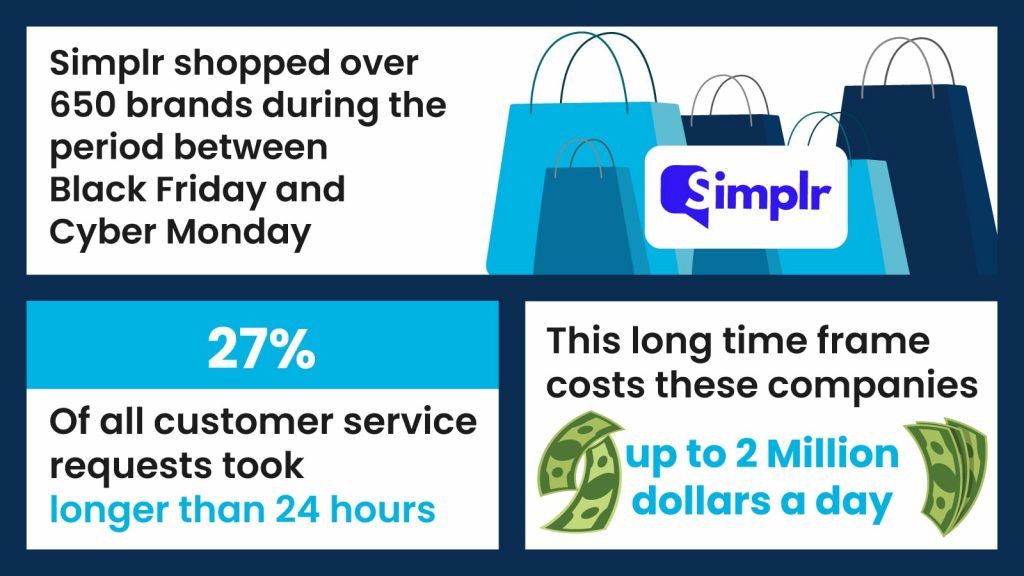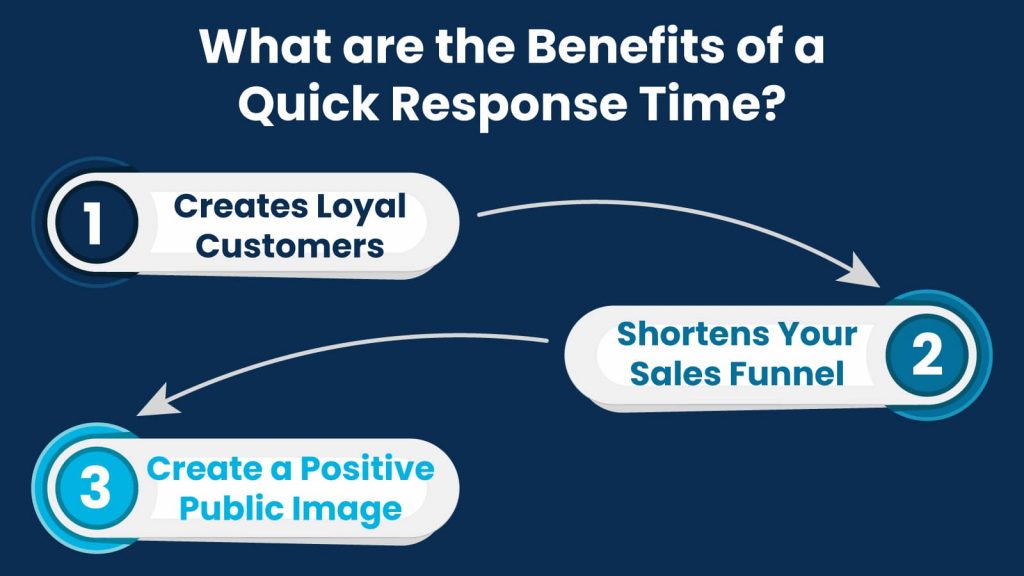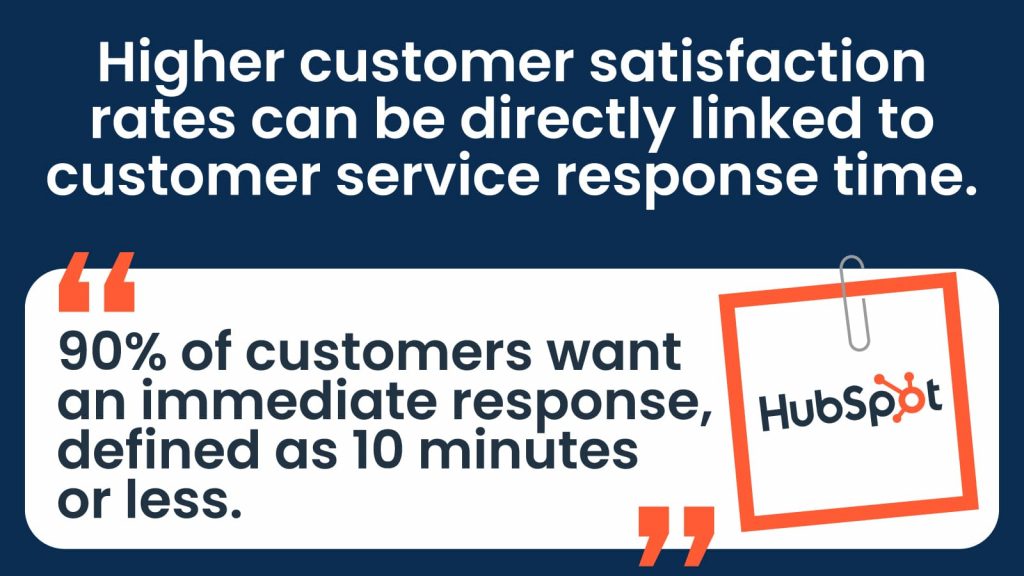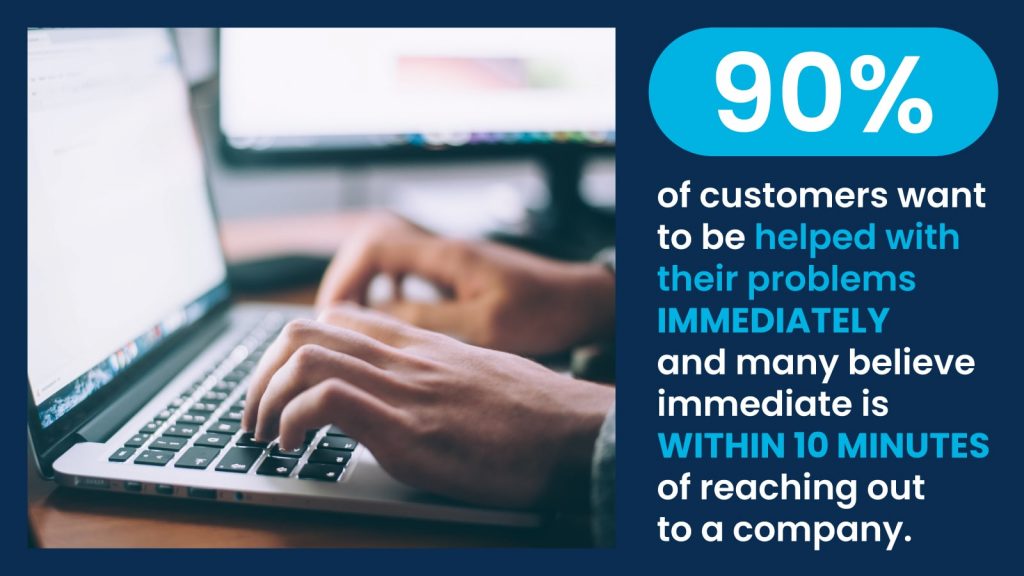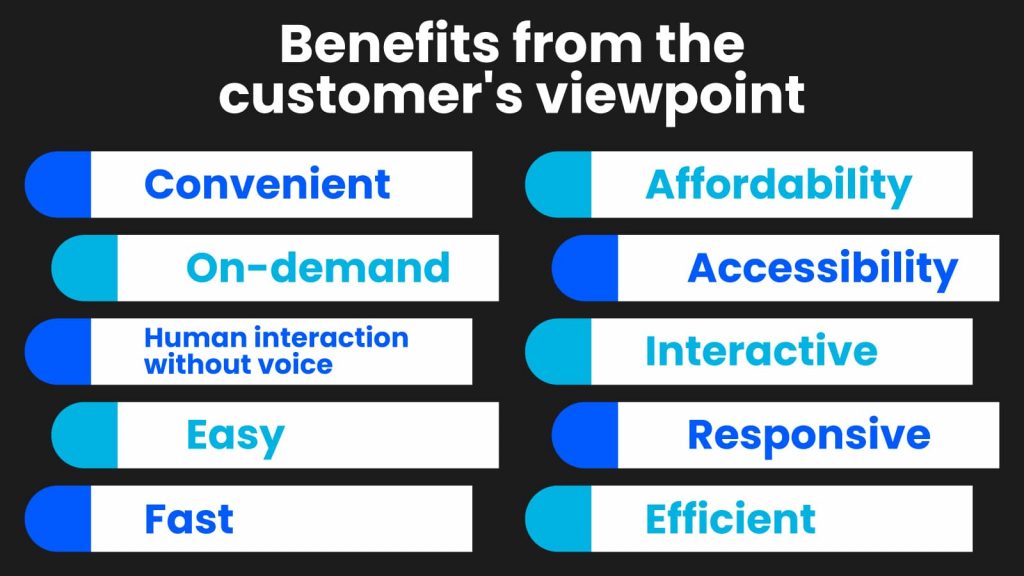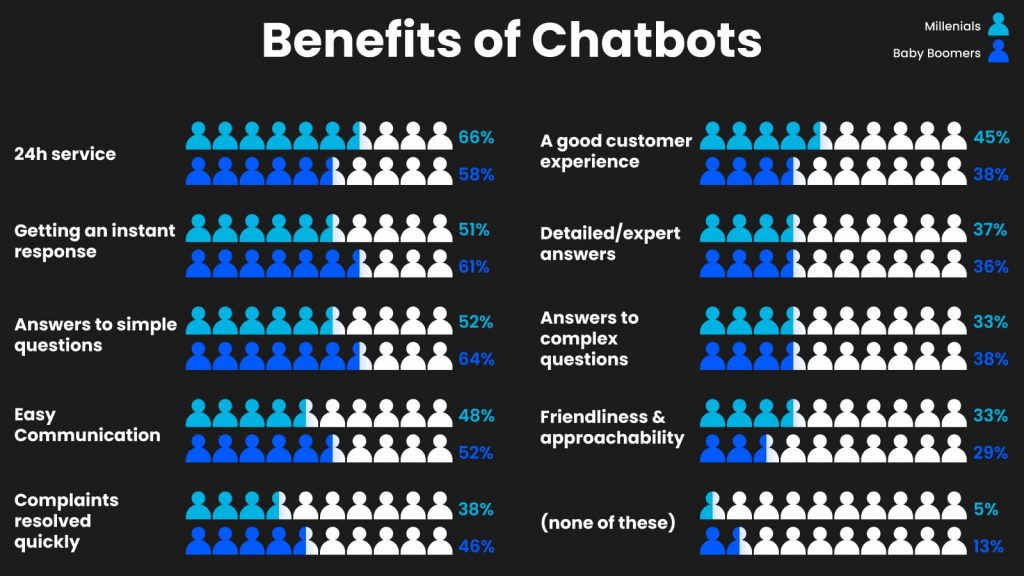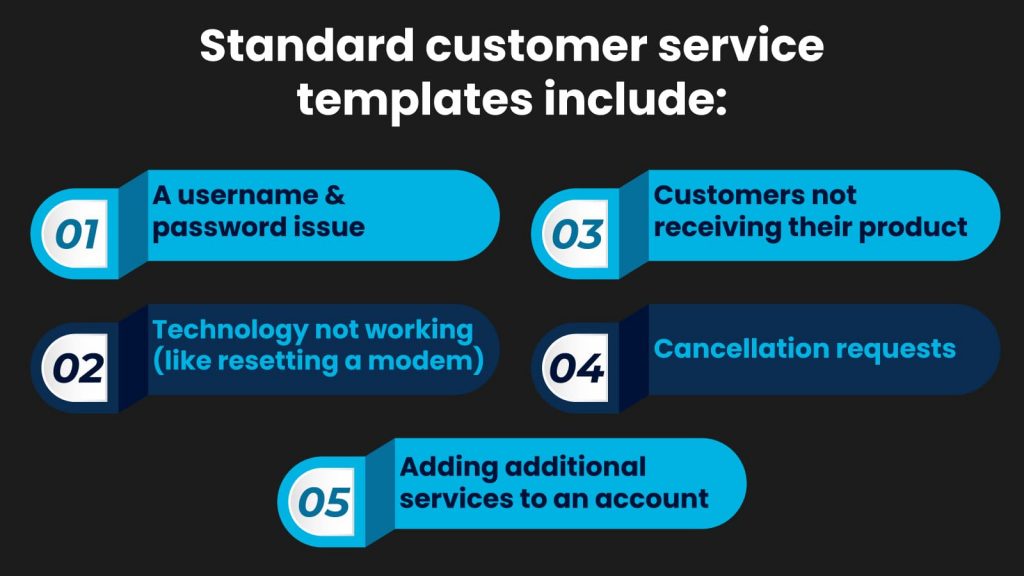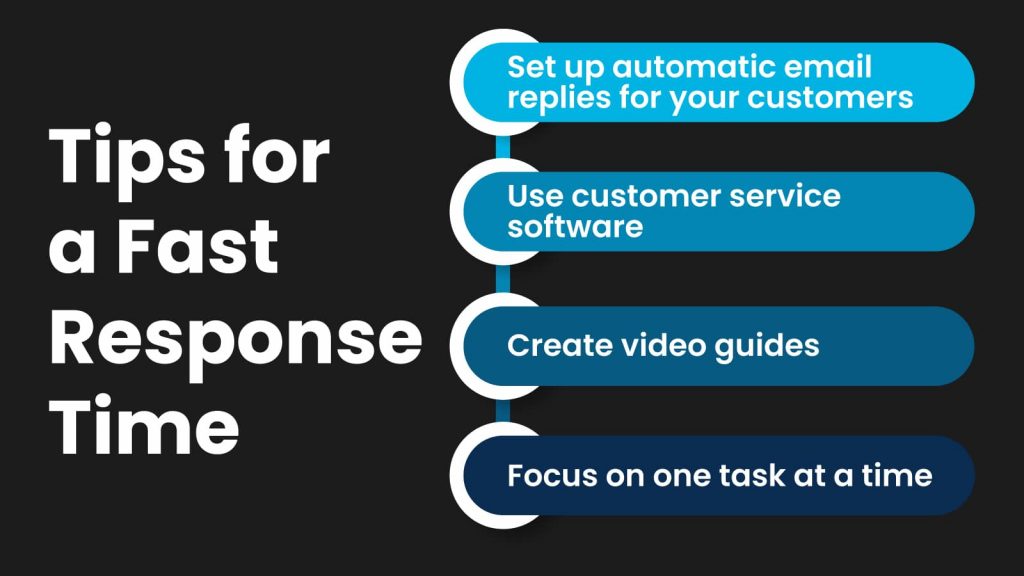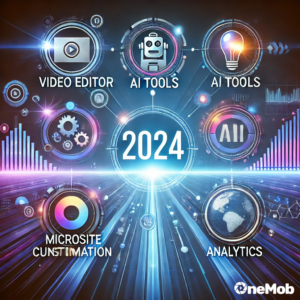Are you looking for how to reduce customer service response time? To reduce this critical metric, you need to understand what it is and why it is crucial.
Table of Contents
- What are the Benefits of a Quick Response Time?
- What are the Disadvantages of Slow or No Response Time?
- How to Calculate Average Reply Time (Art)
- Use Chatbots That Offer 24/7 Support
- Utilize Response Templates and Shortcuts
- Train Your Team for Better Customer Service
- Tips for a Fast Response Time & How It Can Help Your Bottom Line
- Final Thoughts
What is Customer Service Response Time? Customer service response time is the period that passes between the time the customer contacts a business and when the company responds. This period is like customer response time, which is the time that passes between when a customer orders and when they get their product.
Why is Customer Service Response Time Important? There are many reasons that you want to have a good response time for customer service. Some of the top reasons include customer satisfaction, credibility, and the opportunity of receiving good customer feedback.
It is also essential to track your customer service response time. By tracking your time, you will be able to set goals for improvement. As you improve, you will also be able to come up with metrics for how different response times affect your business.
Simplr mystery shopped over 650 brands during the highest shopping period of the year (between black Friday and Cyber Monday). In this study, 27% of all customer service requests took longer than 24 hours. This long time frame, collectively, costs these companies up to 2 Million dollars a day.
Keep reading this article to learn more about customer service response time, including the advantages of a good time, the disadvantages of a poor response time, and ways to improve yours.
What are the Benefits of a Quick Response Time?
There are many benefits to having a fast customer response time, so it is imperative to find ways to reduce customer service response time. Here are some of the benefits of prioritizing this activity for your business.
- Creates Loyal Customers: Customers who are happy with the products and service you provide, including the time it takes to serve them and answer any questions, are likelier to become loyal customers.
- Shortens Your Sales Funnel: The quicker you answer your customer’s questions and concerns or solve their problems, the faster your sales funnel will be. By being efficient in this matter, your customers will remain engaged. They will not move on from your company to a competitive business.
- Create a Positive Public Image: You will also create a positive image of your company by keeping your customers happy. Customers talk. They talk to friends, family, neighbors, and the entire world through social media. The more customers with positive things to say, your business will look better.
Research shows that customers want businesses to value their time, but many companies are falling short of this mark. According to Forrester Research, 77% of customers want businesses to show that the customer’s time is essential. Valuing the customer’s time is the number one way to provide good customer service.
Furthermore, higher customer satisfaction rates can be directly linked to customer service response time. According to HubSpot, 90% of customers want an immediate response, defined as 10 minutes or less.
What are the Disadvantages of Slow or No Response Time?
Competition for customers is enormous. There are so many businesses that people can buy their products from these days that more than having a superior product is needed to guarantee success. Customer service is imperative to having a successful business, and learning how to reduce customer service response time, is crucial.
There was a time when good customer service was a perk to a business. That time has passed. Quick, efficient, and knowledgeable customer service is now an expectation. A lack of fast customer service can negatively affect a business’s bottom line.
One-third of customers will leave a brand, bringing future business or canceling any subscription model already in place after a bad customer service experience. Lousy customer service can refer to many things, including not being helped, never responding, or slow response time.
90% of customers want to be helped with their problems immediately and many believe immediate is within 10 minutes of reaching out to a company.
Some disadvantages of slow or no response time include loss of potential customers, loss of current customers, loss of employees, taking a hit to a business’s reputation, and loss of profits.
The reason loss of employees is on the list is that upset customers take out their frustrations on customer service reps, who may leave the company due to this treatment. Anyone involved in the hiring process can tell you that replacing employees is expensive.
It could cost 50 – 75% of an employee’s yearly salary to replace them. This cost would include advertising a job, going through the interview, onboarding, and training.
How to Calculate Average Reply Time (Art)
When you want to reduce customer service response time, you must learn how to track this time. You first need to calculate the average reply time (Art).
Average Replay Time (Art) is an essential metric that businesses use to determine the overall average time it takes for their support team to respond to a variety of requests from customers.
A simple calculation of Art would be the total time taken to respond to requests during a specified period divided by the total number of requests during that period.
Once you begin calculating Art, you should also start tracking it. There are a variety of ways companies choose to do this. Some ways they follow this time are tracking based on priority tickets, tracking on individual channels, by ticket status, or by using custom filters. Most businesses will track in various ways and run reports to analyze how the business could improve this metric.
Another metric companies use is First Response Time (Frt). The first response time is like Art, but only the first contact is tracked. Therefore, the first response time will not consider issues that require multiple communications or escalation.
Use Text Messaging to Speed Up Customer Service If you are looking for ways to reduce customer service response time, use technology to your advantage. There was a time when the business did customer service in person and by phone. However, in today’s world, we have many ways to connect with customers using the technology at our disposal.
One of these ways is by using text messaging for customer service. If you are concerned about how many customers would prefer this method, don’t be. According to Forbes, almost 93% of consumers prefer this method. However, less than a third of companies offer text messaging for customer service.
Having multiple ways to communicate with your customers is always a good idea. This way, your customers can choose their preferred method. A study has shown that 49% of American customers have switched companies due to poor customer service. Poor service can be a combination of knowledge base, demeanor, response time, and ways to get into contact.
Many different platforms offer this service, including Apple, Android, WhatsApp, Messenger from Meta, and Line.
There are plenty of benefits from the customer’s viewpoint. Here are a few of them:
- Convenient
- On-demand
- Human interaction without voice
- East
- Fast
- Affordability
- Accessibility
- Interactive
- Responsive
- Efficient
Use Chatbots That Offer 24/7 Support
Another technology forward way to reduce customer service response time is by utilizing chatbots. Chatbots are an effective way to scale up your customer service as your business grows. Although not every customer wants to talk to a chatbot, almost half do.
According to Zendesk research, nearly half of all customers believe providing customer support 24/7 shows good customer service.
Chatbots can quickly answer your customer’s questions, even when your staff is unavailable. Certainly, they are used when there is no customer service staff available. Still, businesses can also utilize them to free up their team for more difficult queries or customers who prefer to only speak to a live agent.
By introducing chatbots as one of your customer service models, you will be able to talk to more customers quicker, increasing your response time.
Many businesses use chatbots, but you still want yours to be the best. With everything else, strive to stand out from the crowd. You can do this by naming your chatbot and giving it a personality, thereby allowing your customers to feel like they are being taken care of by a person..
Another idea is to program your chatbot with more than basic knowledge allowing it to help more people. Keep the design simple, the bot approachable, and the program easy to use to reach the widest audience possible.
Utilize Response Templates and Shortcuts
There are many ways to reduce customer service response time. One of the ways that many businesses use is to create templates and shortcuts. Templates are very common and have been in use long before all the technology we currently have today.
A template can spell out exactly how a customer service agent should respond to specific questions and how to walk the customers through their problems. Some standard customer service templates include:
- A username and password issue
- Technology not working (like resetting a modem)
- Customers not receiving their product
- Cancellation requests
- Adding additional services to an account
These templates will allow your agents to assist quicker while having everyone use the same language regardless of who takes a call.
Text shortcuts will also speed the process along. When an agent must type less, there is less hold time and less time when a customer patiently waits for a rep to get to the next process step to help them.
Creating FAQ pages or other support pages is also a good idea. These pages can answer common questions allowing many customers to save the time and energy of calling a customer service line. Once created, the business should keep these pages up to date regularly.
Train Your Team for Better Customer Service
Excellent customer service is done with more than just the latest technology and tools. A well-trained customer service team can help you reduce customer service response time. Training is essential if you want a customer service staff that can be quick and efficient, as well as a knowledgeable, polite team that makes your customers happy.
In today’s workforce, it is common for companies to skimp on training time. Training your team is another place to spend more time than your competition and reap the rewards. A well-trained customer service team will make your customers and employees happier. This investment will help you retain your staff and customers long-term.
Customer service training will teach your staff how to deal with customers and empower them with a knowledge base of information that they will use daily. Your customers will be much happier when you have a trained staff. More satisfied customers are essential for your business as they give you a competitive advantage and will advocate for your brand.
Service reps who benefit from good training will also help encourage customer loyalty. One of the ways they will do this is by being more efficient with each customer, meaning the customers will walk away with a pleasant experience. If your customer service staff also work in sales, they will close more deals when they have a base knowledge and a good attitude.
Tips for a Fast Response Time & How It Can Help Your Bottom Line
Are you still looking for ways to reduce customer service time?
There are many different ways you can do this, including the ones we have already discussed.
- Set up automatic email replies for your customers: This email can be a confirmation email that you have received their question or communication that you are working on it and will get back to them shortly and is a good, quick first response to your customers. Another great idea is to include a link to the FAQ and common system pages in this email. Hence, the customer can fix the issue as soon as possible.
- Use customer service software: Customer service software can keep a deep history of previous calls, emails, and resolutions and will allow your company to help customers individually, making them feel like more than a number.
- Create video guides: Embrace technology and the popularity of streaming by having a FAQ page and creating simple video guides that customers can use at their own pace.
- Focus on one task at a time: During training, teach your employees to eliminate multi-tasking as much as possible. When your agents focus on each task with undivided attention and focus, help times will speed up.
Final Thoughts on Reducing Customer Service Response Time
When looking for ways to reduce customer service response time, many different methods exist. Some of these methods include:
- Tracking your customer response time.
- Using templates.
- Using keyboard shortcuts.
- Setting up automated emails.
- Using technology effectively, like chatbots and text messengers.
- Providing stellar customer service training.
Providing fast and effective customer service to your customers is crucial to a successful business. Quick customer service can help retain customers, gain new customers, and create customer loyalty. Customer loyalty can come in the form of customers only shopping from your business and not going to the competition. However, it can also result in word-of-mouth business and customers advocating for the brand in multiple ways, including positive reviews and feedback and sharing their experiences on social media.
On the flip side, you could jeopardize your business if you do not provide quick customer service. Customers care more than ever about how fast a company gets back to them and how effectively they can solve their issues.

